Chairs are important everyday furniture that is used for sitting. From office chairs to dining chairs, a wide variety of chairs suit your needs. Whether you’re looking for maximum comfort or structural integrity, understanding the parts of a chair is essential.
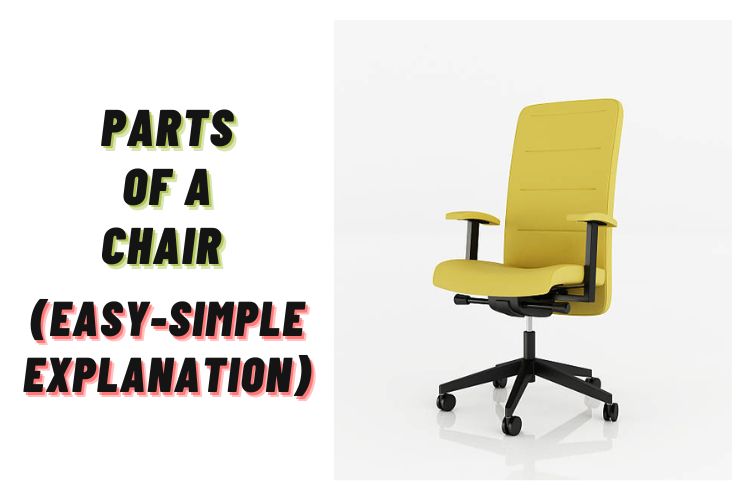
Let’s break down the parts of a chair to help you understand what goes into making a comfortable and durable piece of furniture. From cross rails and armrests to desk chairs and swivel chairs, you’ll get an in-depth look at the different parts of this essential piece of furniture.
What is a good chair?
A good chair is one that provides adequate support and comfort to the user, promoting good posture and reducing the risk of back pain or other discomforts. It should have adjustable height and backrest to accommodate different body types and seating preferences.
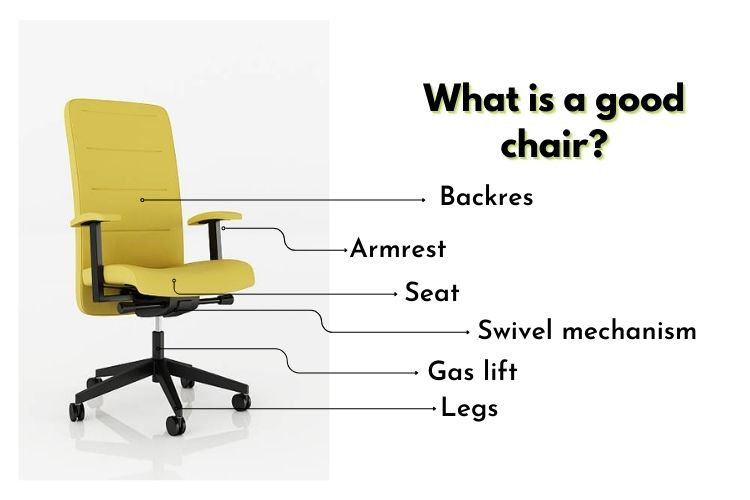
The materials used should be durable and high-quality, ensuring longevity and ease of cleaning. A good chair should also have a stable base with a smooth swivel and casters for easy movement. Lastly, it should be aesthetically pleasing and fit well with the overall design and decor of the intended space.
Related Articles:
Different parts that make up a chair.
Chairs are an essential piece of furniture that we encounter in our daily lives. From sitting at a desk to relaxing at home, chairs play a vital role in providing comfort and support. The seat, backrest, legs, and armrests are all integral components that work together to create a functional and comfortable seating experience. let’s look at the parts that make a chair.
| 1. Seat: | The part of the chair where the user sits. |
| 2. Backrest: | The part of the chair supports the user’s back. |
| 3. Armrest: | The parts of the chair support the arms of the user. |
| 4. Legs: | The parts of the chair support the weight of the user and the chair itself. |
| 5. Crossbar: | The horizontal part connects the legs of the chair. |
| 6. Seat cushion: | The padding on the seat provides comfort to the user. |
| 7. Backrest cushion: | The padding on the backrest provides comfort and support to the user. |
| 8. Swivel mechanism: | The mechanism that allows the chair to rotate or spin. |
| 9. Gas lift: | The mechanism allows the user to adjust the height of the chair. |
| 10. Casters: | The wheels or rollers allow the chair to move around on a surface. |
Seat.
The seat is an important part of a chair in any room. It is usually constructed from a backrest, seat surface, and two armrests with various features such as padding, upholstery, and frames.
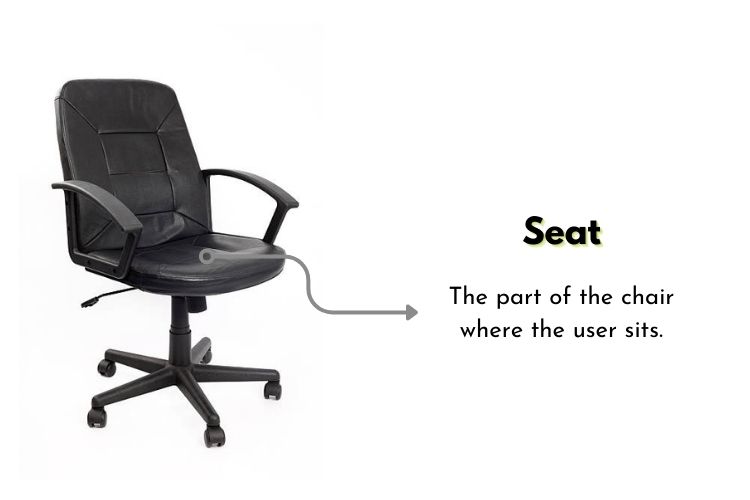
| Material- | Wood, metal, and plastic |
| Upholstery- | Faux leather, velvet, or other textured fabrics |
| Comfort- | Pretty comfortable |
| Shape- | Round, square, rectangle, and other geometrical shapes. |
| Size- | Short, large, and corresponding with body measurements. |
Backrest.
Backrest is an ergonomically designed seat cushion with superior support and comfort for your back.
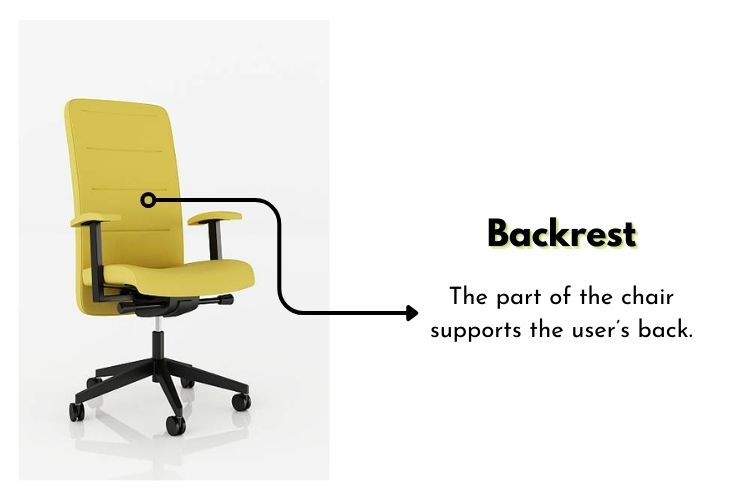
| Design- | Flexible spine-shaped |
| Style- | Adjustable height and width settings |
| Support- | Build for support the spine |
| Comfort- | Pretty comfortable |
Arms.
Chair arms are an important part of a chair that is designed to provide support and comfort to the user’s arms while sitting.
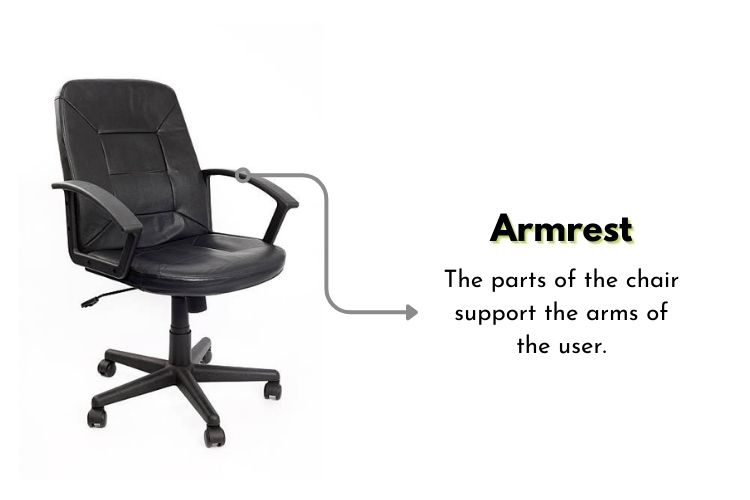
| Function- | Provide a comfortable position |
| Purpose- | Distributing the weight |
| Material- | Hard plastic, metal, soft, padded material, etc. |
| Design- | Adjustable arms, fixed arms |
Legs.
Chair legs are an important component of any chair’s structure, providing stability and support for the weight of the person sitting on it. The durability and stability of chair legs depend on the material and design used.
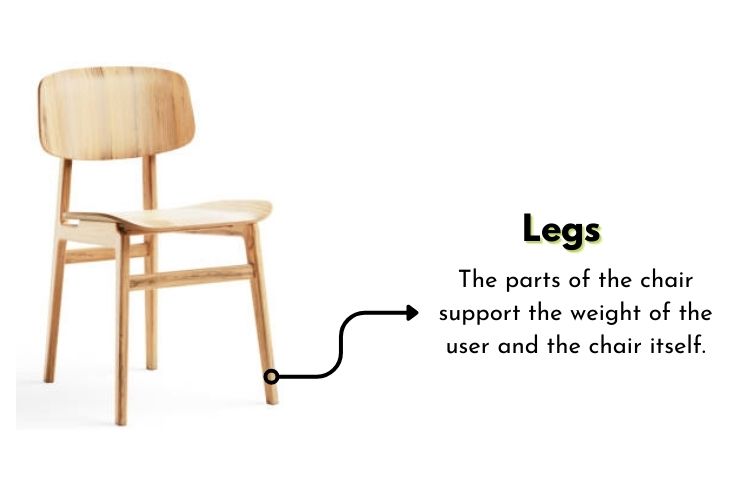
| Material- | Wood, metal, and plastic |
| Design- | Sled and cantilever |
Base.
The chair base is an important component that provides stability and support to the chair. It is designed to ensure that the chair remains sturdy and balanced even when someone sits on it.
| Material- | Metal, plastic, and wood |
| Design- | Four-legged, five-legged, and cantilever designs |
Swivel and Tilt Mechanisms (optional).
The swivel and tilt mechanisms in a chair allow the seat to move both horizontally and vertically, as well as pivot around a central point. This allows the user to adjust the angle and position of the seat and backrest to find a comfortable and ergonomic seating position.
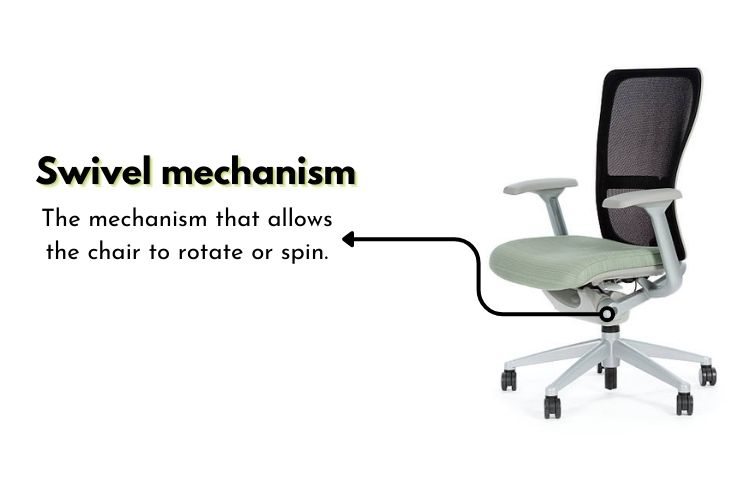
The tilt mechanism allows the chair to rock back and forth, while the swivel mechanism allows the user to rotate the chair 360 degrees without having to move the base. These mechanisms are especially important in office chairs and gaming chairs, where users may need to adjust their seating position throughout the day to reduce strain and fatigue.
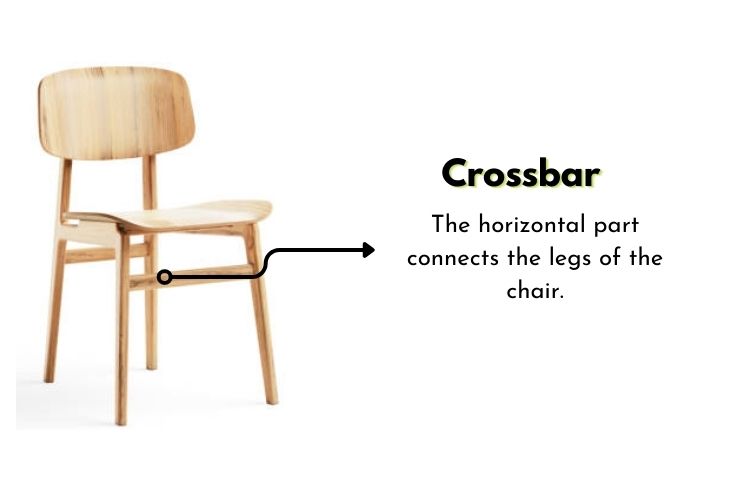
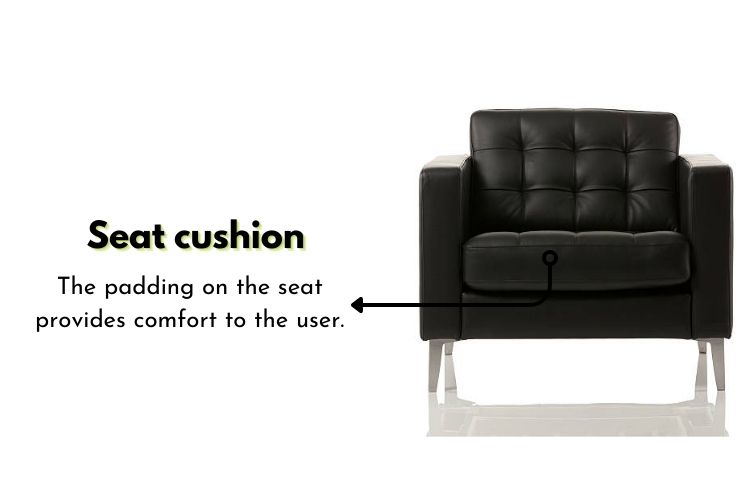
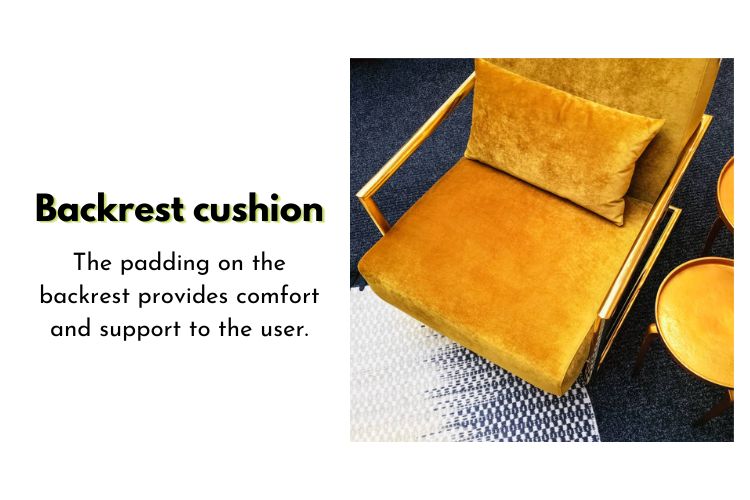
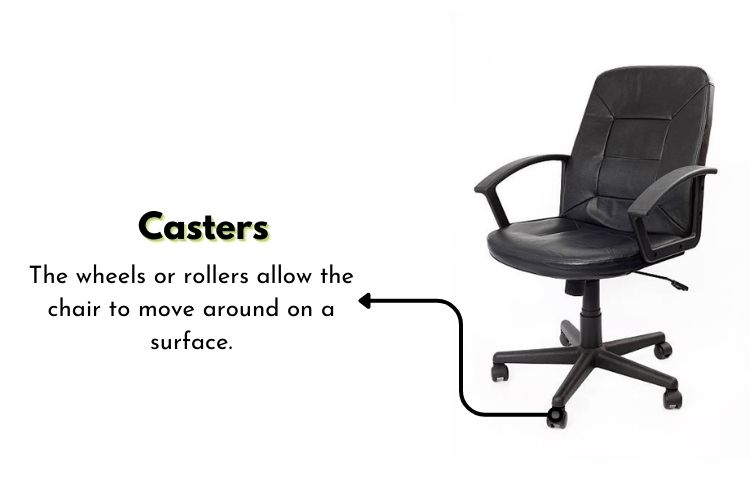
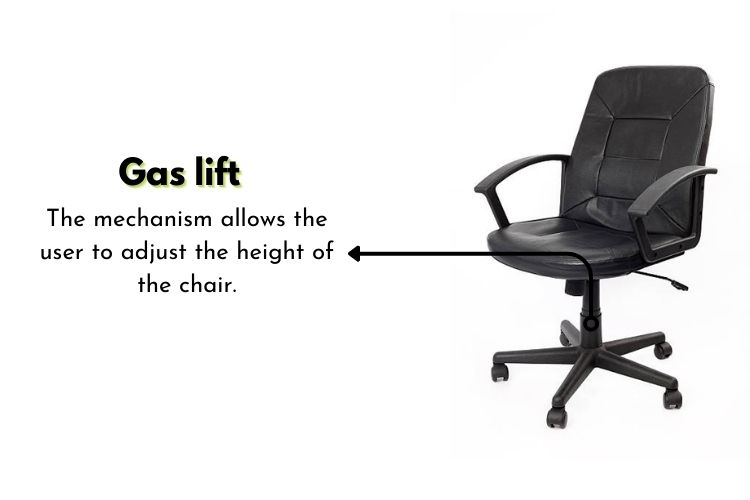
Importance of Proper Chair Design.
The proper chair design is important for several reasons:
| 1. Comfort: | A properly designed chair provides comfort to the user, reducing the risk of developing back pain or other ergonomic issues that can arise from sitting for extended periods of time. |
| 2. Health: | Proper chair design can help prevent health problems such as lower back pain, neck pain, and poor posture and promote good health and well-being among users. |
| 3. Productivity: | A comfortable chair that promotes good posture can improve productivity in the workplace by reducing discomfort and allowing users to focus on their work without distractions. |
| 4. Safety: | Proper chair design can also help prevent accidents by providing stability and support to users. |
| 5. Aesthetics: | A well-designed chair can enhance the overall aesthetic of a room or workspace, contributing to a more professional and appealing environment. |
| 6. Branding: | Chairs that are designed with a company’s branding in mind can help reinforce its identity and create a cohesive look and feel throughout the workspace. |
The proper chair design is crucial for ensuring the comfort, health, productivity, and safety of users, as well as enhancing the overall aesthetic and branding of a space.
Choosing the right chair for your needs.
Choosing the right chair for your needs is important for good posture, comfort, and overall health. Factors to consider include the chair’s adjustability, lumbar support, seat depth, and height, padding, armrests, and mobility.
It is also important to consider your individual needs, such as any existing back or neck pain, and your daily activities. By taking the time to research and test out different options, you can find the perfect chair to support your body and maximize your productivity.
Conclusion.
The various parts of a chair work together to provide comfort, support, and stability. From the frame to the seat, backrest, armrests, and legs, each component plays a crucial role in creating a functional and aesthetically pleasing piece of furniture.
By understanding how these parts work together, we can appreciate the craftsmanship and engineering that goes into designing a well-made chair. Whether you’re sitting at a desk, dining table, or lounge area, a good chair can make all the difference in your comfort and overall well-being.
FAQs
What is the purpose of a chair?
The purpose of a chair is to provide a comfortable and supportive seat for people to sit on. It is commonly used in homes, offices, schools, and various public spaces for seating and relaxation. Chairs come in different designs, sizes, and materials to cater to different needs and preferences.
Why is proper chair design important?
The proper chair design is important because it can greatly impact an individual’s posture, comfort, and overall health. Sitting in a poorly designed chair for long periods of time can result in back pain, neck pain, and other musculoskeletal problems. A well-designed chair can promote good posture, distribute weight evenly, and provide adequate support for the spine, reducing the risk of injury and discomfort.
What factors determine the comfort level of a chair’s seat?
Several factors determine the comfort level of a chair’s seat, including the padding thickness, the firmness of the cushion, the shape and contour of the seat, the material used for the upholstery, and the adjustability of the seat’s height and tilt. Ultimately, the comfort level of a chair’s seat depends on the individual’s body type, preferences, and posture.
What materials are used for the arms of a chair?
The materials used for the arms of a chair can vary depending on the design and style of the chair. It can be made of wood, plastic, metal, or even upholstered with fabric or leather. Some high-end chairs may even use materials like carbon fiber or titanium for their arms.
Leave a Reply